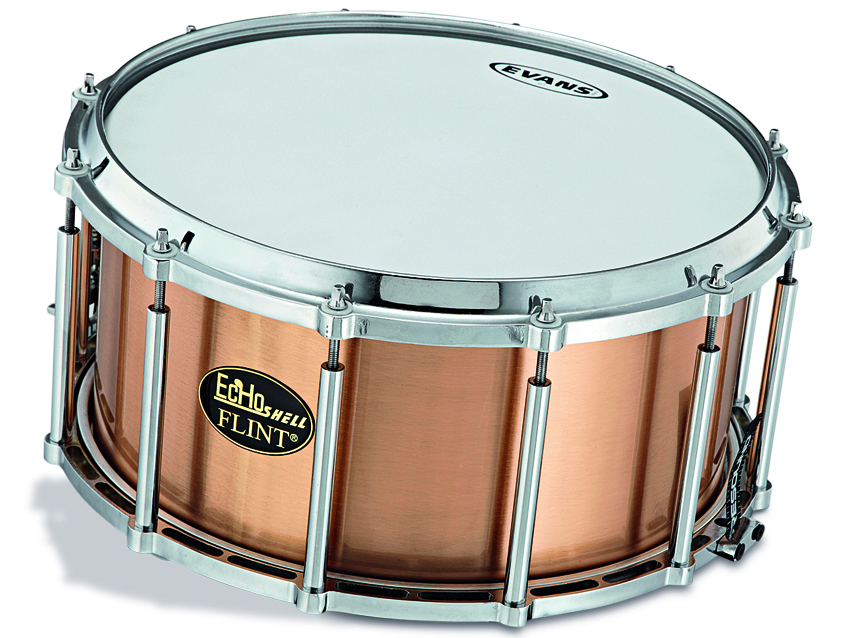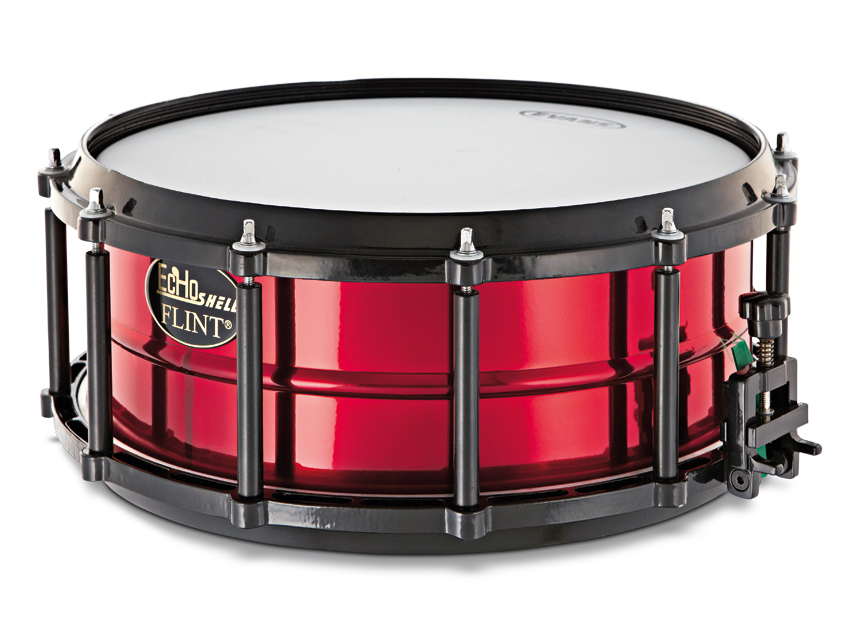MusicRadar Verdict
These unusual snares will probably appeal to heavier players who want something bullet-proof.
Pros
- +
The suspended metal shells give loud, clean sounds…
Cons
- -
…but can you live with single-ended tensioning?
MusicRadar's got your back

EcHo-Flint snare drums

EcHo-Flint snare drums
These unusual snares are the result of a joint venture that couples EcHo Drum's metal shells with the unique free-floating hardware of Flint Percussion.
EcHo builds quality metal shells in 1.2mm steel, brass, copper or aluminium and can polish or powder-coat them in any colour. The review drums are 14"x7" in brushed copper and 14"x5" in polished brass with a centre bead and red powder coating.
"Because of the isolation of the hoops from the shell, cross-sticks and rim-shots are both splendidly clean and crisp"
Each drum has 30° rolled bearing edges and a single vertical-welded seam. The latter is visible on the inside, with a slight dip on the outside.
The really unusual part is the Flint hardware. Flint Percussion of Merseyside specialises in marching band drums and the company has developed an ingenious free-floating, 'suspended shell' system.
Top and bottom hoops are massive die-cast aluminium with all 12 tube lugs and the snare strainer attached to the bottom hoop, not the shell. The shell remains undrilled except for a single air vent and both heads are simultaneously tensioned from the batter side alone.
Constructionally these are battleship snares, which will soak up as much punishment as you're able to mete out.
Want all the hottest music and gear news, reviews, deals, features and more, direct to your inbox? Sign up here.
Hands on
By tensioning the top hoop both heads are held at equal tension, although the resonant head is higher in pitch than the batter because it is thinner.
Just how important this is depends on how fussy you are about your resonant head. Kit drummers often like to fiddle with the tension rods surrounding the strainer if the drum starts to buzz when you play your toms.
Because of the isolation of the hoops from the shell, cross-sticks and rim-shots are both splendidly clean and crisp - in fact cross-sticks are almost disembodied, as though the snares are turned off. There's no shortage of power and you get the pure timbre of the copper and brass, really sensing the freedom of the shells to vibrate with the heads, unimpeded by hardware.
Like everything else about Flint's hardware the throw-off, which is fixed to the bottom hoop, is bulky. It's a hinged pull-down bracket with the plastic snare-tensioning knob built into it.
Unusually, to increase tension you turn the knob anti-clockwise. This latter looks and feels a bit crude, but seems sturdy enough.

Geoff Nicholls is a musician, journalist, author and lecturer based in London. He co-wrote, co-presented and played drums on both series of ‘Rockschool’ for BBC2 in the 1980s. Before that he was a member of original bands signed by Decca, RCA, EMI and more. ‘Rockschool’ led to a parallel career writing articles for many publications, from the Guardian to Mojo, but most notably Rhythm magazine, for which he was the longest serving and most diverse contributor.